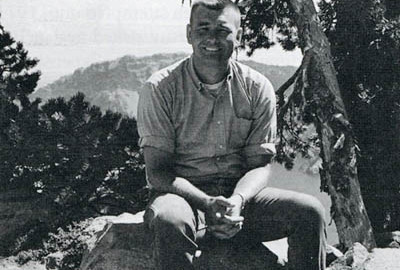Did your article that appeared in the 1990 AAAS volume appear as an alternative view?
No, it was not like Joe LeFleur’s paper which was an alternative view about hydrothermal venting. Mine was simply a paper suggesting possible change. I used data that I had gathered to suggest rather than conclude that sewage had contaminated the lake, and it might explain why the lake’s optical properties had diminished.
How familiar was Goldman with the conditions at Crater Lake relative to his work at Tahoe?
Well, interestingly enough, Goldman had done some work at Crater with Tyler and Smith. Their paper came out in 1973 (38). I don’t know if he went up to Crater but someone did some work and he looked at the data. They compared Tahoe and Crater. If you look at the 1990 AAAS volume, Goldman’s paper is the last one (39). I felt he gave credence to my paper. In other words, Goldman said he had seen the same thing happen at Tahoe. It was a lake that was supposedly immune to eutrophication, yet they had documented a substantial decrease in Secchi disk readings over a 30-year period, and indeed Lake Tahoe was becoming more productive. That lake is much larger in volume than Crater; however, rivers flow into it and there is intensive development at the fringes. It’s far more susceptible and far more exposed to human activities than Crater Lake. If you read Goldman’s paper, he is somewhat supportive of my idea that these lakes are sensitive to even slight nutrient increases because the organisms that inhabit these lakes are adapted for very low nutrient conditions; otherwise they wouldn’t be there. If you add even a miniscule amount of nutrient, that may be enough to stimulate substantial growth.


